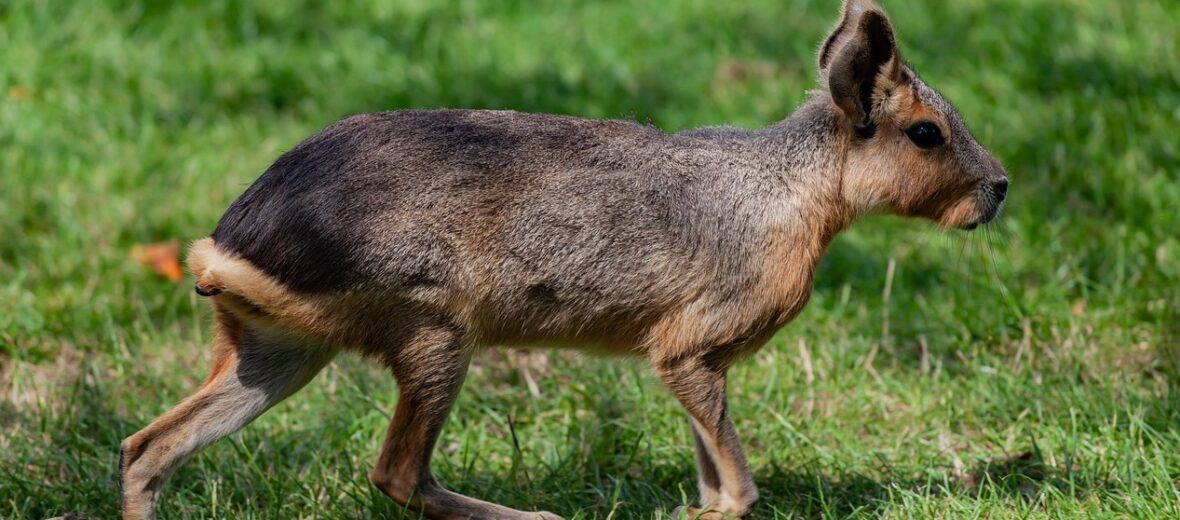
It’s a deer, it’s a rabbit, it’s a… what the heck is that? Why it’s a patagonian mara, of course. They can only be found in Patagonia, Argentina. Patagonian maras like dry, airy, and open scenery. Maras are typically found in deserts, shrublands, brushlands, and grasslands. What exactly is it with South America and large rodents? They even have the world’s largest living rodent, the capybara. The maras are listed as Near Threatened by the IUCN, due to habitat destruction and over hunting by the fur trade.
First the Stats…
Scientific name: Dolichotis patagonum
Weight: Up to 18 lbs.
Length: Up to 2.5 feet
Height: Up to 12 inches
Lifespan: Up to 10 years
Now on to the Facts!
1.) Patagonian maras are diurnal (active during the day).
2.) Seeing as they are rodents, their teeth never stop growing. So they have to constantly chew on tough plants and grind their teeth to wear them down.
3.) These herbivores (eat plant matter) consume a wide variety of green vegetation, seeds, flowers, and fruit. Pappophorum grass makes up the majority of their diet.
4.) They are monogamous (mate for life).
5.) Breeding season lasts from August – September and the female will come into estrus 4 times during this period, but for only 30 minutes.
But wait, there’s more on the patagonian mara!
6.) Females give birth to 2 pups after up to a 90 day gestation (pregnancy).
7.) Up to 22 pairs may keep their young in a grouping of dens. Many pairs will share the same den.
Did you know…?
Maras eat their own poop to aid in absorbing nutrients from the foods they eat.
8.) The age of sexual maturity is 6 months for males and 2.5 months for females!
9.) They also go by the common names of Patagonian hare and Patagonian cavy.
10.) These critters can gather into settlements of up to 70 individuals, but 2 or 3 is more common.
But wait, there’s still more on the patagonian mara!
11.) Maras are the 4th largest rodent in the world, after the 2 species of capybaras and beavers, and the larger species of porcupines.
12.) They can produce a number of vocalizations, but screams and grunts are the most commonly heard.
Did you know…?
When threatened, these critters can leap up to 6 feet in the air!
13.) These large rodents have been documented bouncing on all 4 legs, creating a movement called stotting.
14.) Maras are gentle creatures that are tamable as pets.
15.) Females are able to discern her own pups from other mother’s pups by smell, and will drive away the others so that only her own pups can feed on her milk.
Now a Short Patagonian Mara Video!
Also, check out the Critter Science YouTube channel. Videos added frequently!
Want to suggest a critter for me to write about? Let me know here.
Learn more about all kinds of cool critters, right here!
Some source material acquired from: Wikipedia & IUCN



